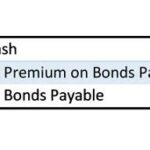In case of errors, simply edit the 1st and 2nd columns of UBTB until you get the correct balances. You can do this by either totaling the last period’s closing balances or you accounts payable software can enter balances as of the 1st day of this period. This makes it easier to prepare financial statements since they will contain one less step. Shaun Conrad is a Certified Public Accountant and CPA exam expert with a passion for teaching. After almost a decade of experience in public accounting, he created MyAccountingCourse.com to help people learn accounting & finance, pass the CPA exam, and start their career.
- This balance is transferred to the Cash account in the debit column on the unadjusted trial balance.
- For example, if you determine that the final debit balance is $24,000 then the final credit balance in the trial balance must also be $24,000.
- An unadjusted trial balance is only used in double entry bookkeeping, where all account entries must balance.
- A company prepares a trial balance periodically, usually at the end of every reporting period.
- An unadjusted trial balance is a listing of all the company’s accounts and their balances at a specific point in time, usually at the end of an accounting period before any adjusting entries have been made.
As you can see, all the accounts are listed with their account numbers with corresponding balances. In accordance with double entry accounting, both of the debit and credit columns are equal to each other. As you can see, the report has a heading that identifies the company, report name, and date that it was created. The accounts are listed on the left with the balances under the debit and credit columns. The errors have been identified and corrected, but the closing entries still need to be made before this TB can used to create the financial statements.
Mục Lục
BigCommerce Pricing: Understanding BigCommerce Fees and Plans in 2024
For example, transactions classified improperly or those simply missing from the system still could be material accounting errors that would not be detected by the trial balance procedure. Basically, each one of the account balances is transferred from the ledger accounts to the trial balance. All accounts with debit balances are listed on the left column and all accounts with credit balances are listed on the right column. Both the debit and credit columns are calculated at the bottom of a trial balance.
After the closing entries have been made to close the temporary accounts, the report is called the post-closing trial balance. Companies can use a trial balance to keep track of their financial position, and so they may prepare several different types of trial balance throughout the financial year. A trial balance may contain all the major accounting items, including assets, liabilities, equity, revenues, expenses, gains, and losses. The key difference between a trial balance and a balance sheet is one of scope. A balance sheet records not only the closing balances of accounts within a company but also the assets, liabilities, and equity of the company. inventory debit or credit It is usually released to the public, rather than just being used internally, and requires the signature of an auditor to be regarded as trustworthy.
Get Started
Our mission is to empower readers with the most factual and reliable financial information possible to help them make informed decisions for their individual needs. Finance Strategists has an advertising relationship with some of the companies included on this website. We may earn a commission when you click on a link or make a purchase through the links on our site.
What is the approximate value of your cash savings and other investments?
Preparing an unadjusted trial balance is the fourth step in the accounting cycle. A trial balance is a list of all accounts in the general ledger that have nonzero balances. A trial balance is an important step in the accounting process, because it helps identify any computational errors throughout the first three steps in the cycle.
All of our content is based on objective analysis, and the opinions are our own. The adjusting entry in the example is for the accrual of salaries that were unpaid as of the end of June.
After Paul’s Guitar Shop, Inc. records its journal entries and posts them to ledger accounts, it prepares this unadjusted trial balance. An unadjusted trial balance is a listing of all the business accounts that are going to appear on the financial statements before year-end adjusting journal entries are made. Unadjusted trial balance is used to identify the necessary adjusting entries to be made at the end of the year.² Adjusting entries are made mainly due to the usage of accrual system of accounting. ² In accrual accounting, revenue and expenses are recorded when they are earned or incurred irrespective of whether the cash is exchanged or not. For instance, in our vehicle sale example the bookkeeper could have accidentally debited accounts receivable instead of cash when the vehicle was sold. The debits would still equal the credits, but the individual accounts are incorrect.







